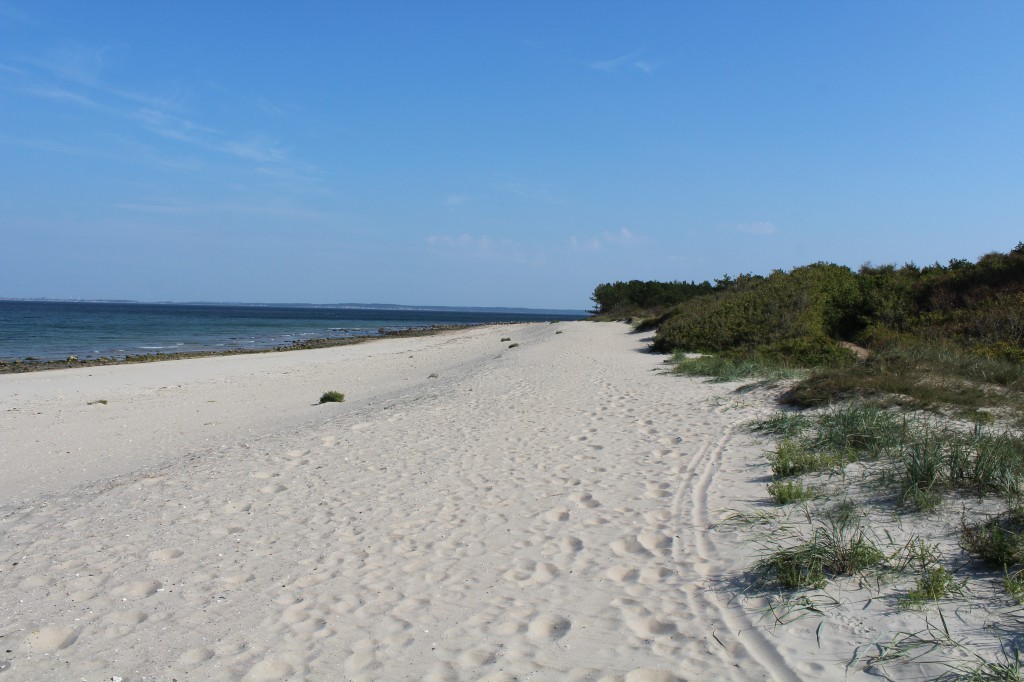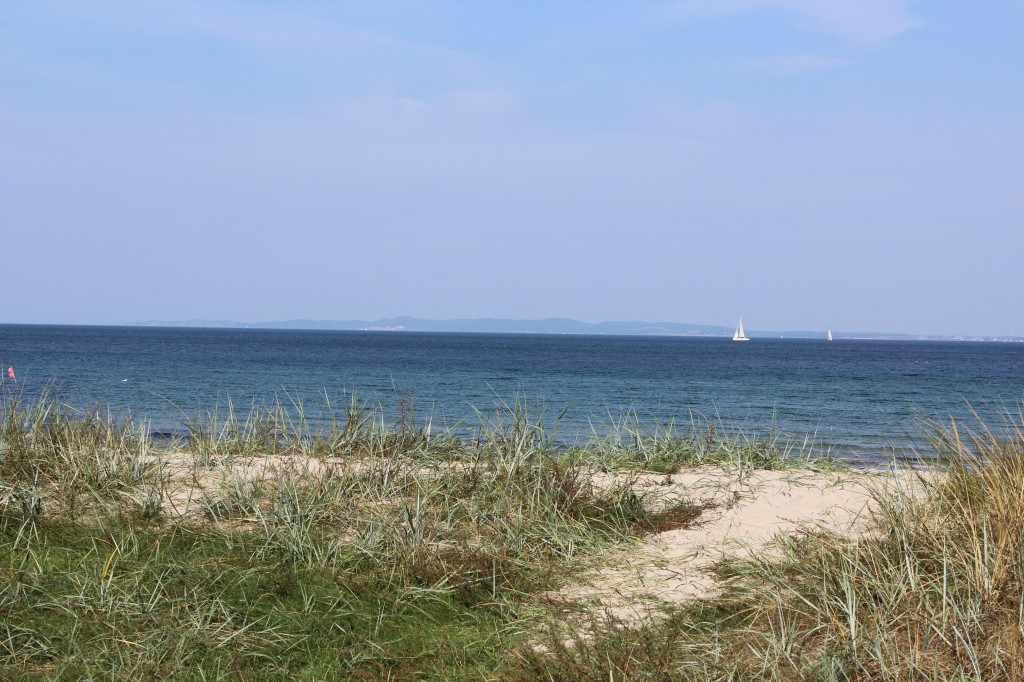Kystsikring i Nordsjælland – Hornbæk Plantage Strand, Ålsgårde Strand, Hellebæk Strand og Julebæk Strand.
Tekst og foto’s Erik K Abrahamsen
View to Kronborg Castle, Elsinore, North Coast of Sealand, Denmark:

Click on the photos and use your zoom control and the text on right side of the photo disappear and you can see them in full screen size.
The stretch of coast in Denmark is 7300 km.
The coast has been formed by huge Scandinavian glaciers some 10-15.000 years ago. When the glaciers melted the subsurface raised and what is Denmark today with island, fjords, lakes, rivers and peninsula Jutland were formed in Danish Stone age, Bronze Age and Iron Age.
The Danish coastline is dominated by big sands beaches with dunes, cliffs, meadows, slopes of various highs.
To protect the coastline and the buildings close to the beaches the Danish State and the local authorities have in centuries builded dikes and installations of big granite stones on the beaches.
The coast protection in Denmark uses 5 components:
1. Breakwaters of big granite stones close to coastline,
2. Big granite stones placed at the foot of slopes and cliffs at the beaches,
3. Dikes,
4. Fill up the beaches with extra sand,
5. Cultivate the sandhills at the beaches.
Map of North Sealand, Denmark:
Click on the photos and use your zoom control and you see them in full screen.

The 5.-6. december 2013 all Denmark were hit by a big storm called BODIL.
The storm hit the coastline of North Sealand with a 2-3 meter high storm surge under high water and with 4-5 meter waves and caused big damages on beaches, sluffs, slopes, houses, harbours and technical installations.
In this article I will show you the coast protection of the danish beaches in North Sealand between Hornbaek and Elsinore:
The coast protection at western part of Hornbaek Plantation Beach, North Sealand:
Fill up the beaches with extra sand:

Map of Hornbaek Plantation:
Click on the photos and use your zoom control and you see them in full screen size.

Hornbaek Plantation Beach – western part:

Hornbaek Plantation Beach – view to Kattegat and cliff Kullen in Sweden:

The responsibility of coast protection in Denmark is a coordination between the state, the regions, local authorities and private owners of houses, estates and nature- and culturals organizations.
In the easter side of Hornbaek Plantation Beach the local authorities have NOT filled up the beaches with extra sand and the beaches are dominated of small stones:
Easter Part of Hornbaek Plantation Beach – Hornbaek-batterierne with concrete artillery bases from 2. World War 1940-45:

Easter part of Hornbaek Plantation Beach:
The waves have swept the sand on the beach into Kattegat Sea and from here the water streams settle the sand in eastern direction on big underwater sand banks in Kattegat and at the entrance to Øresund close to Elsinore.

When the storm Bodil hit the coastline at North Sealand on 5.-6. december 2013 several meter of slopes were swept with trees, paths and benches into the Kattegat Sea:
Easternpart of Hornbaek Plantation Beach:

Easter part of Hornbaek Plantation Beach:

Hornbaek Plantation Beach, easter part – view in direction northeast to Kattegat Sea and Sweden:

From Hornbaek Plantation I drive on Nordre Strandvej (Road nr. 237) in direction east to western part” Ellekilde” of Aalsgaarde Beach:
Coast protection of slopes with big granite stones:

Coast protection on slopes with big granite stone Aalsgaarde Beach, easter part:

Coast protection on Aalsgaarde Beach, easter part:
Big granite stones on slopes and breakwater close to coastline.

Aalsgaarde Beach, easter part:
View in direction to Kattegat Sea from 20 meter high cliffs at the coastline.

Hellebaek Beach, North Sealand:
Coast protection with breakwater and a lot of sand on the beach.

Hellbaek Beach – coast protection with big granite stones on slopes and breakwaters:

Hellebaek Beach – houses at Nordre Strandvej (Road nr. 237) close to the coastline of Kattegat Sea:

Hellebaek Beach – coast protection with granite stones on slopes and breakwaters:

Hellebaek Beach – coast protection with granite stones on slopes and breakwater.
View in direction to Kronborg Castle in Elsinore:

I drive 1 km east on Nordre Strandvej (Road nr. 237) to Julebaek Beach, North Sealand:

View from Julebaek Beach in direction east to Kronborg Castle in Elsinore:

Map of North Sealand, Denmark:
Click on the photos and use your zoom control and you see them in full screen:

Text and photos Copyright by Erik K Abrahamsen 2014
All rights reserved
Links: kyst.dk – Danish Coastal Authority, The Danish Ministery of Environment (Kystdirektoratet, Miljøministeriet).
Summary.
Coast protection in Denmark:
1. Breakwaters of big granite stones close to coastline,
2. Big granite stones placed at the foot of slopes and cliffs at the beaches,
3. Dikes,
4. Fill up the beaches with extra sand,
5. Cultivate the sandhills at the beaches.
As I mentioned in the beginning of this article Denmarks stretch of coast is 7300 km with coastlines with fjords, cliffs, slopes, meadows and to North Sea wide sand beaches with high dunes.
Examples with dikes, fill up with sand and cultivating the sandhills:
Dikes:

Fill up with extra sand:

Cultivating the sandhills:
All the coastline to the North Sea (Vesterhavet) at western part of Jutland from Esbjerg in south to Skagen in north – all in all about 300 km – is a unique landscape of beauty shaped by sea, storm and sand through centuries:

Click on the photos and use your zoom control and you see them in full screen size.
Melby, North Sealand, Denmark 21. september 2014
Best greetings
Erik